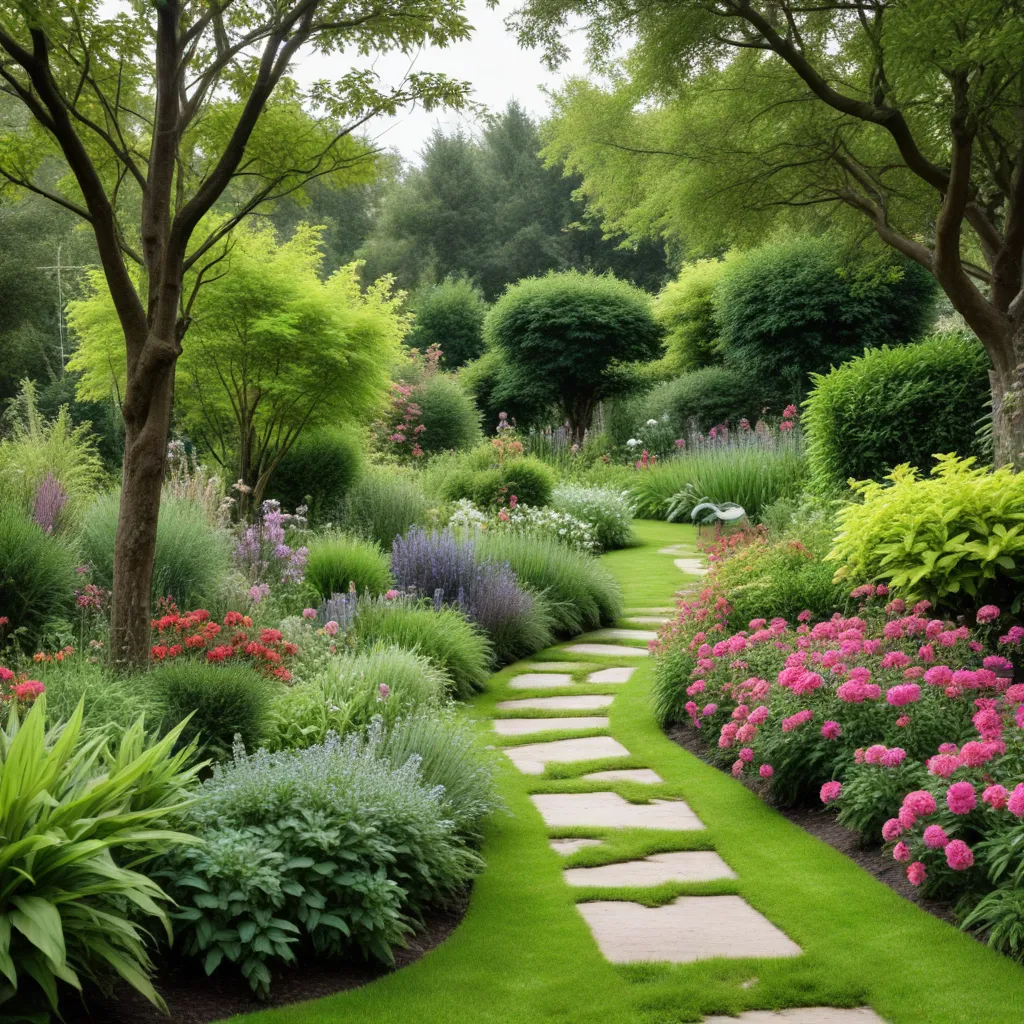
Maintaining a flourishing garden is an art form in itself, requiring a delicate balance of soil preparation, thoughtful planting, and strategic watering. As experts at the Wine Garden Inn, we’ve cultivated our fair share of greenery over the years, weathering the challenges of seasonal shifts and pest management to create lush, vibrant outdoor spaces that complement our award-winning wines. In this comprehensive guide, we’ll share our top tips and tricks for garden care, empowering you to transform your own modest patch of earth into a verdant, thriving oasis.
Garden Essentials
Soil Preparation
The foundation of any successful garden lies in the soil. Before planting, it’s essential to evaluate your soil’s pH level, nutrient content, and drainage properties. Use a simple soil testing kit to determine the acidity or alkalinity of your soil, then amend it accordingly with lime to raise the pH or sulfur to lower it. Incorporate nutrient-rich compost or aged manure to enrich the soil, providing a nutrient-dense environment for your plants to thrive.
Proper drainage is also crucial – no one wants waterlogged roots. Assess your soil’s drainage by digging a hole 12 inches deep, filling it with water, and timing how long it takes to fully drain. If the water lingers for more than a few hours, consider installing raised beds or adding sand, perlite, or vermiculite to improve drainage.
Planting Techniques
When it comes to planting, timing is everything. Pay close attention to your region’s climate and plant accordingly – cool-season crops like lettuce and peas in the spring, heat-loving tomatoes and peppers in the summer. Ensure each plant has enough space to grow by referring to its specific spacing requirements, and don’t be afraid to experiment with companion planting to maximize your garden’s productivity.
Carefully consider the sun exposure of your garden beds. Most vegetables and herbs thrive in full sun (6+ hours of direct sunlight per day), while shade-loving plants like hostas and ferns can add depth and texture to more shaded areas. Mulch newly planted seeds and seedlings to retain moisture and suppress weeds.
Watering Strategies
Proper watering is the lifeblood of any garden. The general rule of thumb is to provide about 1 inch of water per week, whether from rainfall or supplemental irrigation. However, factors like temperature, humidity, and plant type can influence watering needs. Invest in a rain gauge to monitor precipitation, and observe your plants’ leaves and soil moisture to determine when they need a drink.
For the most efficient water usage, consider installing a drip irrigation system or strategically placing soaker hoses around your garden beds. This targeted approach delivers water directly to the roots, minimizing evaporation and ensuring your plants get the hydration they crave. Adjust your watering schedule seasonally to account for changes in weather and plant growth.
Maintaining Flourishing Gardens
Weeding and Mulching
Vigilant weed management is crucial for the health and vitality of your garden. Invest time each week to pull up any unwanted plants by the roots, preventing them from competing with your desired crops for valuable nutrients and water. As an added bonus, regular weeding can be a meditative, grounding experience.
Complement your weeding efforts by applying several inches of organic mulch around your plants. This natural barrier helps retain soil moisture, suppress weed growth, and gradually break down to nourish the soil. Opt for materials like wood chips, leaves, or straw, and replenish the mulch layer as it decomposes over time.
Pruning and Trimming
Regular pruning and trimming are essential for maintaining the health and aesthetic of your garden. Remove any dead, damaged, or diseased plant material to redirect the plant’s energy into healthy growth. Prune shrubs and trees in late winter or early spring before new buds emerge, and deadhead spent flowers on annuals and perennials to encourage continued blooming.
When pruning, always use clean, sharp bypass pruners or loppers to make clean, angled cuts that will heal quickly. Disinfect your tools between uses to prevent the spread of disease, and remember to dispose of any infected plant material rather than composting it.
Pest Management
No garden is immune to the occasional pest invasion, but with proactive monitoring and integrated pest management strategies, you can keep unwanted visitors at bay. Regularly inspect your plants for signs of damage or the presence of insects, and address any issues promptly.
Start with organic, non-toxic solutions like insecticidal soap, neem oil, or diatomaceous earth to target and eliminate pests. If necessary, you can also introduce beneficial predators like ladybugs, praying mantises, or lacewings to restore the natural balance of your garden ecosystem. Avoid harsh chemical pesticides, which can harm beneficial organisms and contaminate the soil and water.
Ornamental Horticulture
Flower Gardening
If you’re looking to add a touch of vibrant color and fragrance to your landscape, consider incorporating an array of flowering plants. From the bold, dramatic blooms of dahlias and sunflowers to the delicate, whimsical petals of cosmos and zinnias, there’s a flower to suit every gardener’s taste.
When planning your flower garden, group plants with similar light, water, and soil requirements together for optimal growth. Incorporate a mix of annuals, perennials, and bulbs to ensure a continuous display of color throughout the seasons. Don’t forget to include pollinator-friendly plants like lavender, echinacea, and lupine to attract beneficial insects and hummingbirds.
Landscaping Design
The art of landscaping extends beyond just the garden itself, encompassing the thoughtful placement of trees, shrubs, and hardscaping elements to create a cohesive, visually stunning outdoor space. Consider the scale, texture, and growth habits of your plant choices, arranging them in a way that complements the architecture of your home and enhances the natural flow of the landscape.
Incorporate focal points, such as a decorative water feature or a striking specimen tree, to draw the eye and create visual interest. Use edging and borders to define garden beds and pathways, and incorporate seating areas and pergolas to encourage relaxation and outdoor living.
Container Gardening
For those with limited outdoor space, container gardening offers a versatile and rewarding solution. Whether you’re working with a small balcony, patio, or windowsill, you can cultivate a thriving oasis of edible and ornamental plants in strategically placed pots, planters, and hanging baskets.
When selecting containers, opt for well-draining materials like terracotta, ceramic, or plastic, and ensure they have adequate drainage holes. Fill them with a high-quality potting mix tailored to the specific needs of your plants, and consider incorporating slow-release fertilizer to provide sustained nutrition. Group compatible plants together, taking into account their light, water, and spacing requirements, for a visually captivating and productive display.
Sustainable Gardening Practices
Composting and Recycling
Embracing sustainable gardening practices not only benefits the health of your plants but also the environment as a whole. At the Wine Garden Inn, we’re passionate about closing the loop on waste by composting our kitchen scraps and garden trimmings to nourish our soil.
To get started with composting, set aside a dedicated space in your yard for a compost bin or pile, and layer green (nitrogen-rich) materials like fruit and vegetable scraps, coffee grounds, and grass clippings with brown (carbon-rich) materials like dried leaves, shredded paper, and sawdust. Regularly turn the pile and monitor the moisture level to ensure optimal decomposition. The resulting compost can then be worked into your garden beds to improve soil structure and fertility.
Water Conservation
As responsible stewards of the land, we’re committed to minimizing our water usage and protecting this precious resource. In our gardens, we employ a variety of water-saving strategies, including drip irrigation systems, rainwater harvesting, and the strategic placement of drought-tolerant plants.
When it comes to watering, we prioritize deep, infrequent soakings over frequent, shallow waterings, which can actually encourage shallow root growth and weed germination. We also mulch our beds heavily to retain soil moisture and reduce evaporation, and we’re vigilant about repairing any leaks or malfunctioning irrigation components.
Organic Gardening
At the Wine Garden Inn, we believe in the power of organic, regenerative gardening practices. By eschewing synthetic fertilizers and pesticides in favor of natural, earth-friendly alternatives, we’re able to cultivate vibrant, nutrient-dense produce and ornamentals while protecting the delicate balance of our garden ecosystem.
Our organic fertilizers are derived from plant and animal by-products, slowly releasing essential nutrients to our plants over time. We also make liberal use of green manures and cover crops to fix nitrogen, suppress weeds, and improve soil structure. For pest management, we rely on beneficial insects, organic insecticides, and diligent hand-picking to keep our plants healthy and thriving.
Through our commitment to sustainable gardening practices, we’re not only able to provide our guests with the freshest, most flavorful produce and herbs but also nurture a resilient, biodiverse garden that can withstand the test of time. We invite you to adopt these techniques in your own backyard, transforming your outdoor space into a verdant, thriving oasis that nourishes both body and soul.
